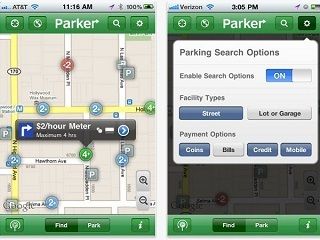From 2GreenEnergy Intern Fabio Porcu: The Benefits of Smart Parking in Large Cities

Especially in large cities, drivers adopt a particular system to find a parking spot: the most common method is to look for parking near the destination, then going to expand the search to find a free parking lot closest to the destination. This research method causes the consumption of large quantities of fuel and also means that the streets are clogged with vehicles looking for spots.
In the process of looking for parking, the drivers make different decisions after having searched for authorized free parking without finding it. The driver can:
- Look for a paid parking space
- Look for an unauthorized park space; this is very common in the big cities where it is hard to find an authorized place
- Look for off-street parking, instead of wasting time looking for on-street parking; most drivers choose to go directly to a parking lot even if it is not close to the destination.
Increasingly, more cities are adopting the strategy of smart parking to solve this problem. But what does smart parking actually mean?
The concept involves using low cost sensors that detect when a parking spot is free, real-time data collectors, and mobile-phone applications that allow people to reserve and pay for the parking. In this way users can find a parking space through their phone, reserve it for the time that they need it, and pay for it. This system allows even easier control by the authorities; they know which cars are illegally parked, so they can remove them.
The process for electronically finding a park can be split into six parts:
- Every arrival and departure is detected in real time from the sensor. It sends the data to the data collector that administrates the parking.
- The driver is guided, by the app in the mobile-phone, to the available space.
- The driver parks his car.
- The driver pays by the phone or by a meter and activates the timer.
- The officer is guided to unpaid violations and overstay.
- The staff receives data that can be used for future decision making.
Smart parking is being deployed in parts of San Francisco, Los Angeles, Stockholm, Beijing, Shanghai, and Sao Paolo with great results.
In Los Angeles, smart parking is used in the Hollywood district, one of its most congested areas. In addition to the environmental benefits, smart parking pays for itself; Los Angeles saw a return on its investment in as little as three months.
In Shanghai, one of the smartest cities in China, by 2012 over 3 million smart meters had been deployed in the city and now the local authorities promote the use of smart meters for gas and electricity consumption.
In Stockholm the system has been a great success, lowering traffic by 18 percent and cutting waiting times to enter the city center by 50 percent. Public transportation has also seen a 4.5 percent increase in ridership, traffic has dropped by 20 percent, and carbon emissions have dropped by 14 to 18 percent.
Yet installing smart parking in a city is not as easy as it seems. Often the private parking lots are managed by different owners; to create a single system that collects the data from every parking lot is not so easy. Smart parking is now working properly in some areas of the big cities but it is hard to connect in a single system all the cars parked in the city. Smart parking that is used in smaller cities has proven to be beneficial, however by connecting an entire region like Los Angeles County through a smart phone application will not be so easy and fast.
Smart parking brings different advantages to the society where it is installed, both to the consumers and to the parking operators. Consumers no longer have to worry about uncertainties in cost and travel time, while parking operators benefit from reduced operation costs with enhanced long-term value of infrastructure. Furthermore, the concept can bring benefits for the environment like the reduction of noise, lack of security, air pollution, greenhouse gas effects, and reduced traffic congestion.
In the future, it will be possible to have a single system for the management of parking in big cities. Through the phone it will be possible to book a lot for the time that you need in such a way to coordinate as much as possible the traffic in the busiest areas of the city. The technology is ready to do this and the cost of sensors and software is decreasing. In this way, soon, every city will be able to make itself a smarter place to live, work, and play.
